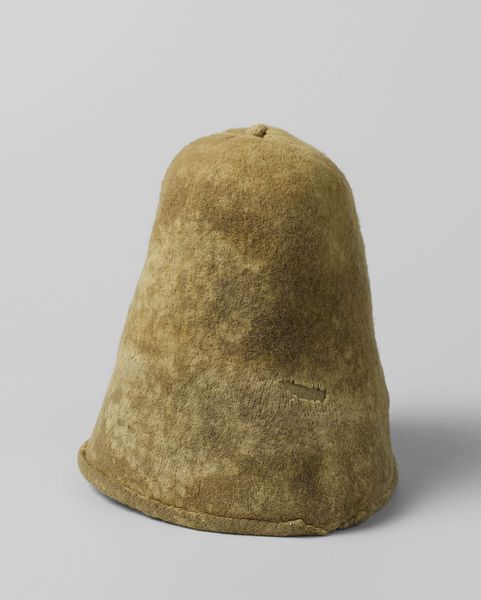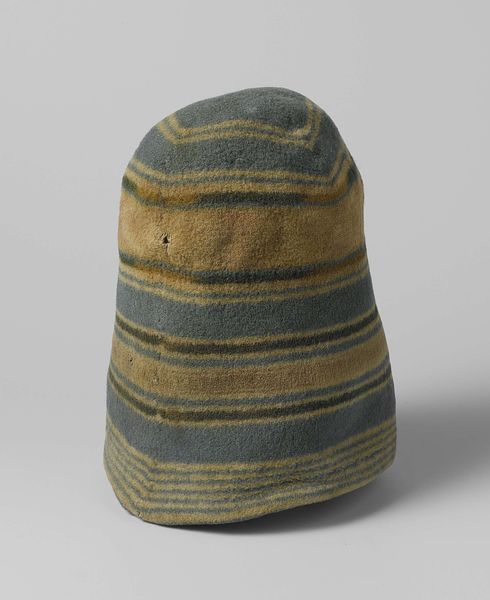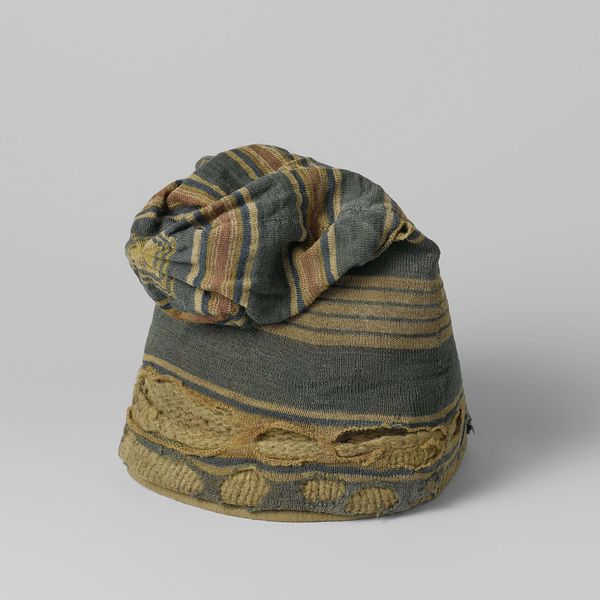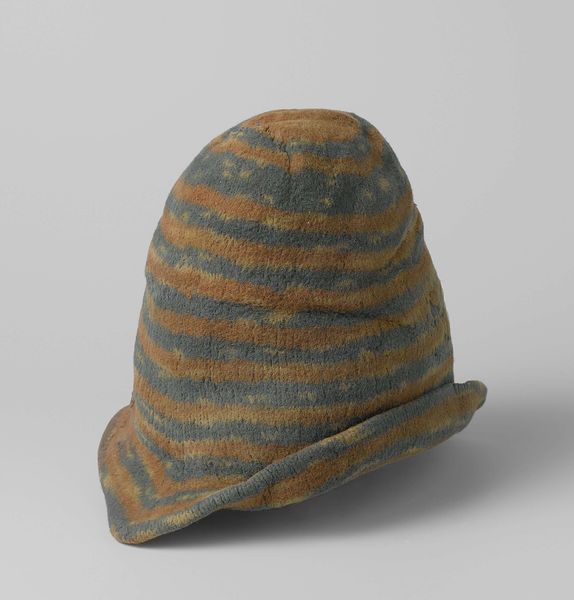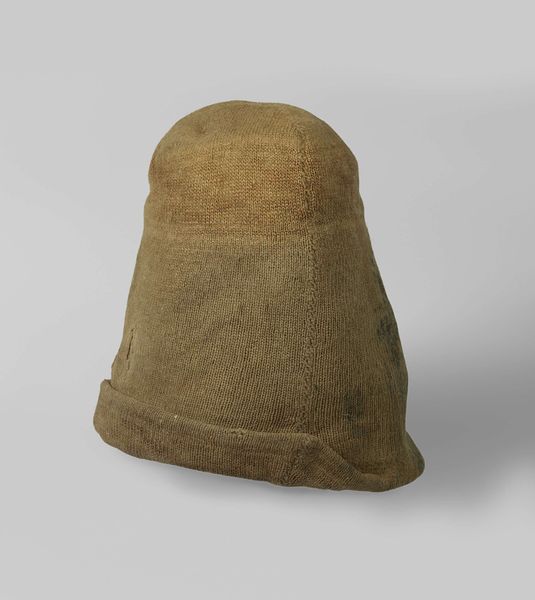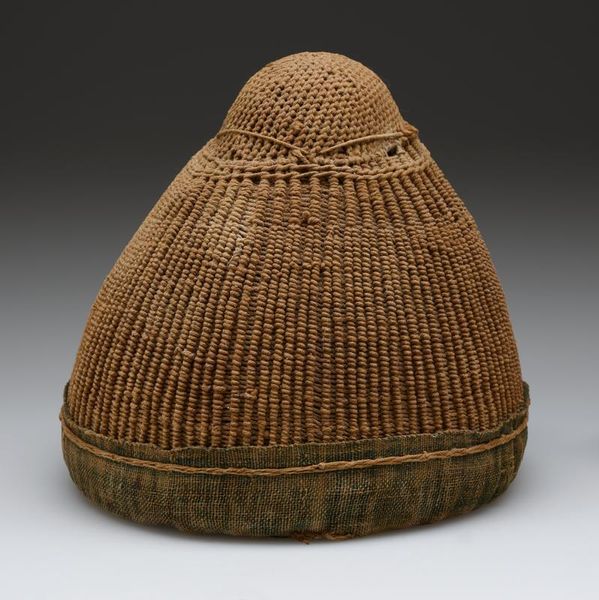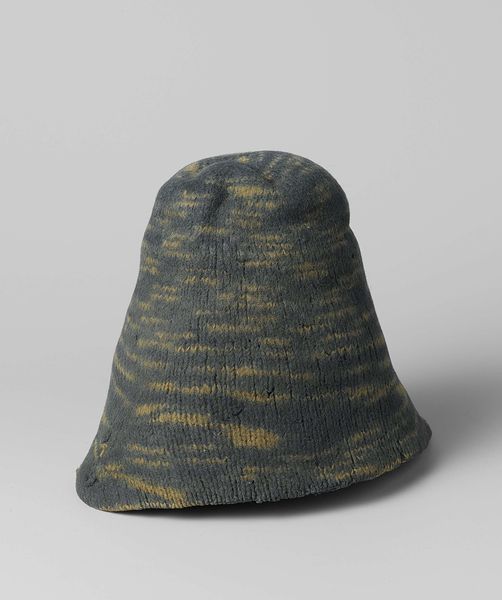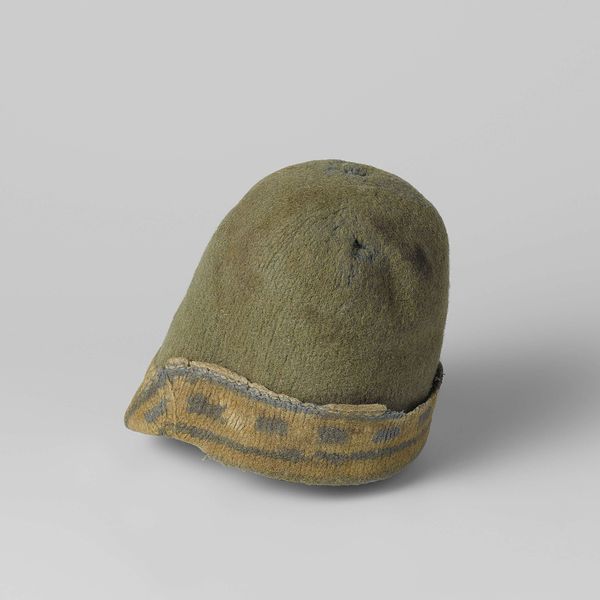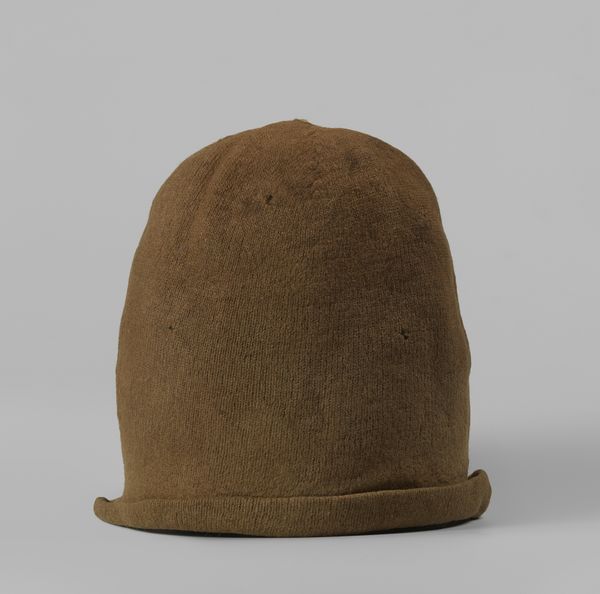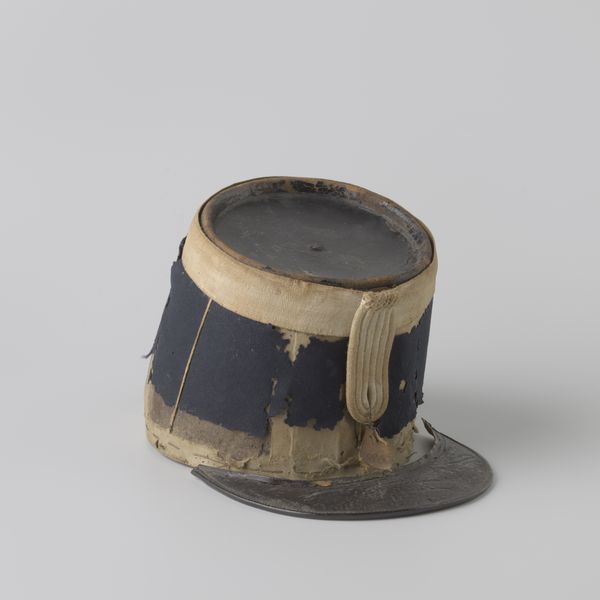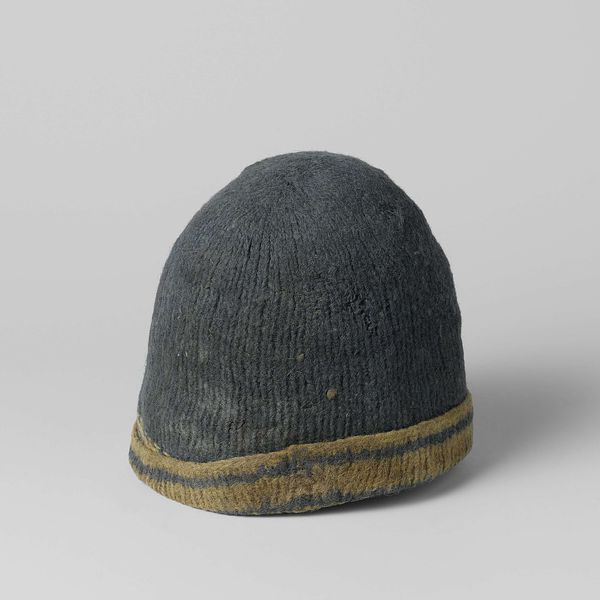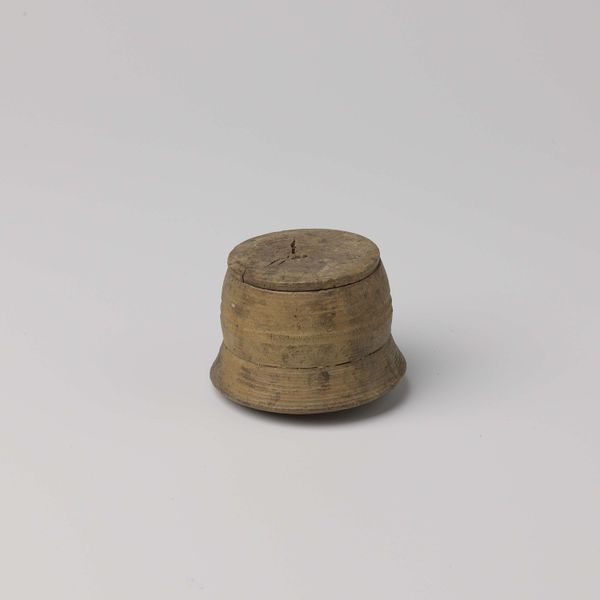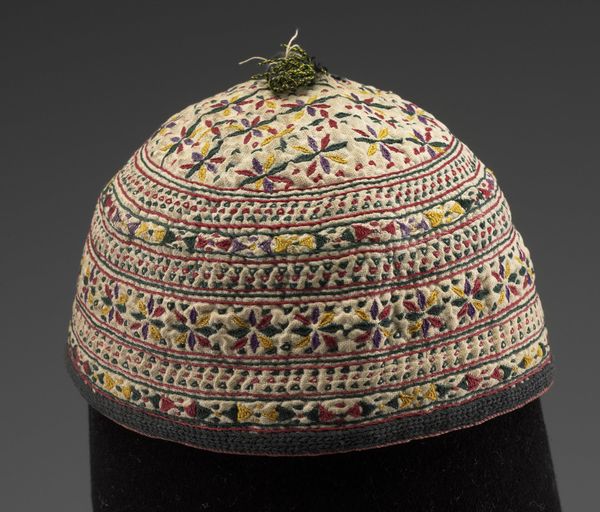
textile, photography
#
portrait
#
dutch-golden-age
#
textile
#
photography
#
folk-art
Dimensions: width 35 cm, height 30 cm, depth 29.5 cm, circumference 30 cm, height 26 cm
Copyright: Rijks Museum: Open Domain
Editor: Here we have what's titled "Woollen caps worn by Dutch whalers" from circa 1700 to 1800. I'm struck by how humble this object is; a piece of everyday wear elevated to the status of art, almost like a memento. What’s your perspective on its cultural significance? Curator: This isn't just any cap; it speaks volumes about Dutch maritime history and the whaling industry's impact on their society. The Golden Age saw a surge in Dutch exploration and trade, with whaling being a key, albeit brutal, economic activity. Caps like these would have been crucial for warmth and protection. It makes you wonder, doesn’t it, about the individuals who wore them? What were their lives like? Editor: It does make you think about their lives, braving the cold. Were these caps standardized in any way, perhaps through guild regulations? Curator: Potentially! Guilds often had rules about materials and production quality. Examining these caps in that light can reveal much about the socio-economic structures governing artisanal production. Moreover, consider the representation of such "ordinary" objects in a museum setting – it forces a re-evaluation of what we consider valuable or worthy of preservation. How does the context of a museum alter our perception of this textile? Editor: It definitely transforms it. The museum spotlights it, giving importance to a piece of clothing. So it's both about the whaling industry and how we value objects. It really prompts consideration about art’s role in reflecting our history and culture. Curator: Precisely. And even how museums shape and influence that reflection. What began as practical apparel now functions as a potent historical artifact.
Comments
rijksmuseum about 2 years ago
⋮
In 1980 archaeologists investigated the graves of 185 Dutchmen – whale hunters and workmen of the train oil refineries – who had died on or near Spitsbergen during the 17th century. The skeletons were still wearing their knitted woollen caps. Each cap was individualized; the men recognized one another only by the pattern of stripes on the caps. The men were bundled up so tightly against the fierce cold that only their eyes were visible.
Join the conversation
Join millions of artists and users on Artera today and experience the ultimate creative platform.
